The pigments
Philippe Echaroux is a self-taught photographer who has managed to make himself stand out through original works such as his “Painting with Lights” and series of street portraits.
The Frenchman, originally from Marseille, has quickly carved out a path to find his place as a celebrity and advertising photographer.
As he himself says, he started photography somewhat by chance one week in August 2008. Having bought a Fuji 6500FD bridge camera out of pure curiosity, he decided to spend a bit of time trying out photography. This purchase was a trigger for the rest of his career. We met with the artist in our headquarters in Lausanne, just after he had finished shooting for the launch of a new series of compact flash units, the ELC Pro HD 500 and 1000.
Philippe, tell us a bit about your history with Elinchrom. How did you discover the brand and what attracted you to it?
I started in the sporting world and in sports you often look to surround yourself with partners you like working with. My journey to Elinchrom stems from that. It is a brand which I quickly came to appreciate, having invested in some Ranger Quadra kits thanks to my first few little jobs. And then I said to myself: as I’m starting out in photography and I have the chance to really develop, why don’t I show to people who dare not take the plunge, exactly what a aspiring professional photographer’s life is like? And that’s where the “Photographer’s Life” video series was born. The rest all came through meeting people with the same values and passion as me.
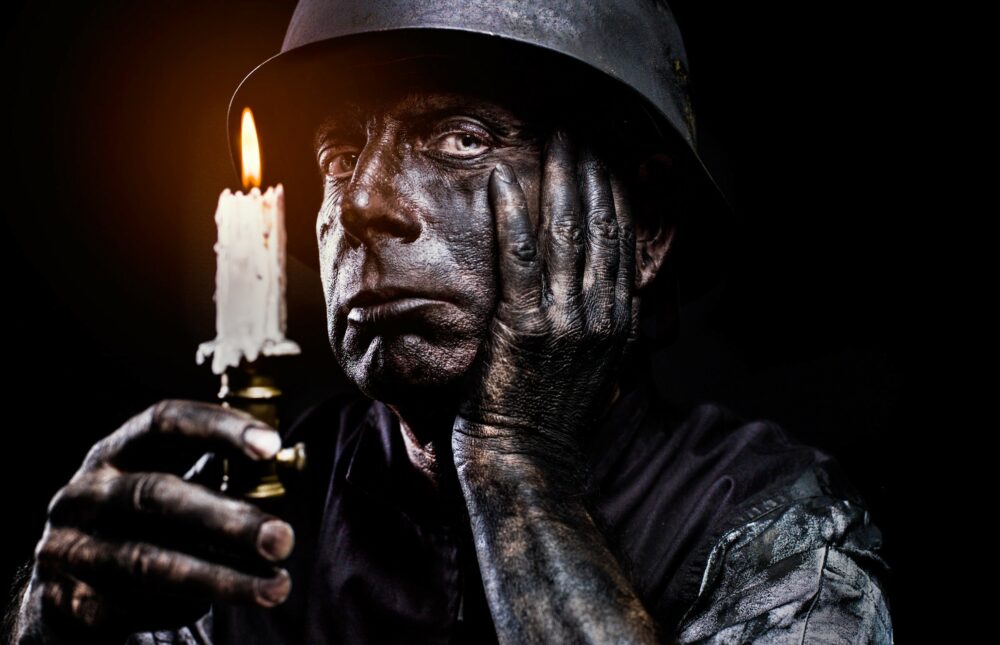
What is your approach when it comes to creating a photographic composition and what excites you so much about this form of expression?
Initially, like many others, I admired the work of some great photographers and I said to myself “that must be Photoshopped!” I quickly realised my error and it was when I realised the importance of lighting that I really made some progress. For me, a picture is made thanks to the photographer’s vision of the lighting and how he imagines the subject to be pictured with appropriate light. And that’s what I really love in photography – that work on lighting. Spending hours on a computer retouching my pictures isn’t really my thing and it’s not what I enjoy. On the other hand, using my time to set up the lighting, choose the accessories, choose the type of flash that we’re going to use, the power, the location and so on. That research interests me and that’s what I try to show in my projects.
Technically, what’s the most important thing when it comes to managing the lighting?
The most important thing for me will be the quality of the light provided by the flash unit (colour temperature and power stability) and the second thing is the accessory which we put in front. Whether that’s a beauty dish or a softbox, it’ll bring me hardness or softness in the lighting. Also the source and the direction of the light, how to shape the subject according to where the light is coming from, for example – parameters like that are very important for me. So I need flash units that are stable and well-built, and then it’s up to me to choose the right accessories to whip something up with all that.
The Shooting

“I don’t spend a lot of time doing up-front work during a shoot, I often get it right pretty quickly.”
You recently did a shot for Elinchrom to promote the new ELC Pro HD 500 / 100 compact flash units. What other equipment did you use for these pictures?
I shot with my loyal H3DII39, which we used with a wide range of octogonal softboxes, Rotalux, among others. There was so much kit available to us that I can’t list it all here but it was like being a kid in a candy shop! As far as the set is concerned, we worked on a classic black studio background, with two assistants to help me (luckily!). The work itself went really smoothly – I’m not someone who spends a lot of time doing up-front work during a shoot. I normally have a think about my set-up the day before and with practice I often get it right pretty quickly. Things pass off a lot more simply and quickly, which is important for the dynamic of the shot.
The ELC Pro HD is a compact unit with a lot of advantages. Talk to us a bit about your experience and your impression of this new product. What can it bring to your work? Could these new units open up new ground for photographers to explore?
Indeed I did have the chance to preview these two – the ELC Pro HD 500 and 1000 – and I loved them! I see them as a small revolution in the quiet world of studio flash, I have to say! Technically speaking, the strong point of these units is obviously their flash duration, which is really fast, and therefore their ability to capture everything clearly. The significant power is excellently balanced with a very quick flash and that is extremely important.
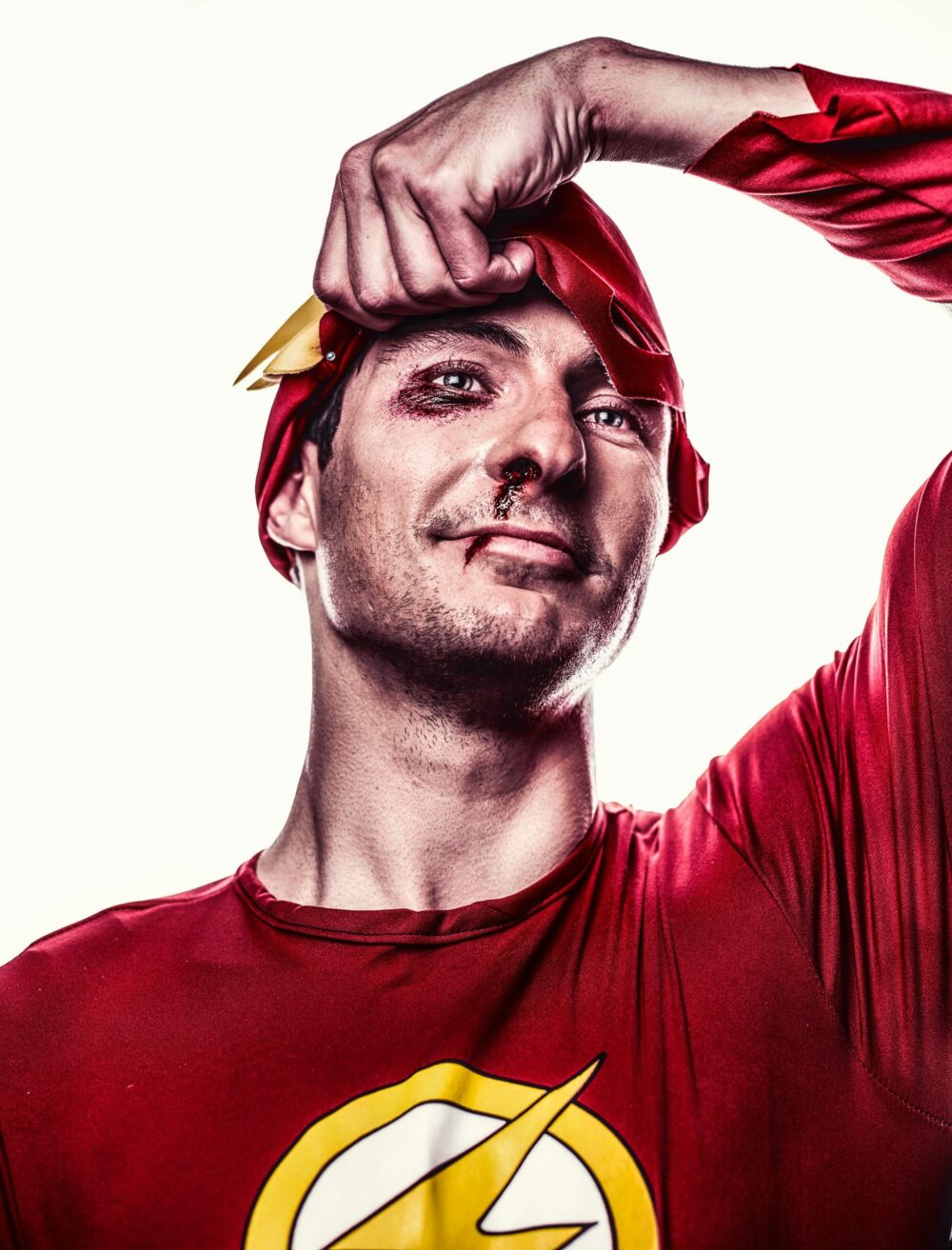
“If you focus too much on technical matters, you limit yourself creatively. I didn’t want to fall into that pitfall with the ELC Pro HD!”
With these characteristics, I wanted to do another shoot with some pigments, as I had done before. But this time, my idea was a little more complex than just fixing the various elements in place. I really wanted to create a natural and free horizontal movement. The pigments have variable speeds according to whether they’ve hit the model or not, so we had to find a balance to find the right speed, so that certain pigments would stay fixed and others would be moving. For me, that also shows the importance of being able to use the capabilities of your kit without being a slave to it, and that’s where creativity is found, for me! If you focus too much on technical matters then you limit yourself creatively, and I didn’t want to fall into that pitfall with the ELC Pro HD!
The second advantage that I found with these flash units and it’s something that you don’t necessarily think about when you invest in lights but that is really important, is the minimum power these lights are able to offer. To show that, I decided to take a photo of someone who is only lit by a candle. The goal was to show that these powerful flash lights can be as delicate and soft as candlelight. I do think that the ELC Pro HD’s really bring new ground to explore in the studio, which is obviously their best point! Being able to do a stroboscope with real lighting power opens up new doors – for sure. We did a shot over only two days but even in that time I realised that if you focus what these units can do, then you can produce totally new images.
Flash Modes
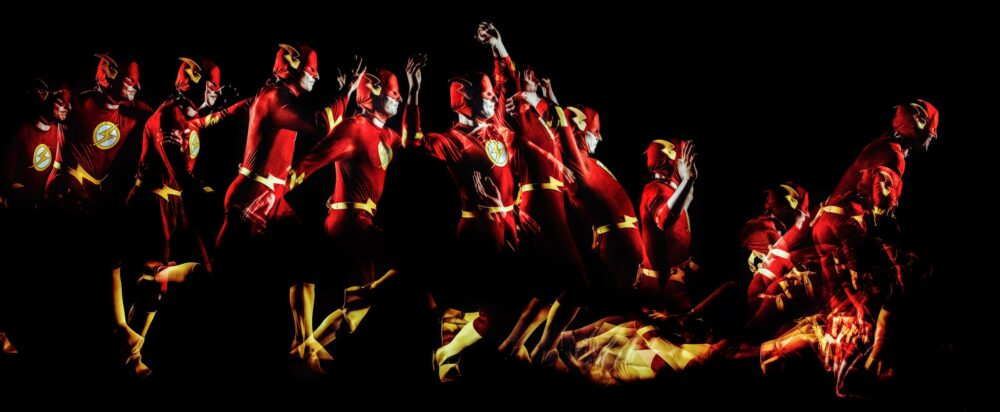
Can you describe these modes a bit more in detail so that we can understand the potential creativity of the ELC?
So we have the Strobo Mode which I just mentioned, which allows you to break down a movement exactly like a sequence of images, general used for quick actions such as sport, for example. You leave the sensor exposed and the flash does all the work, producing a certain number of flashes in a given time-frame – it’s a really interesting mode! Then we have the mode called “Delay” which is nothing more than a second curtain sync mode, like on a cobra flash. This one allows us to produce more artistic photos, with soft movement rather than a broken-down movement. It’s quite new on studio lights and it’s really exciting because, unlike the cobra, you have the possibility and the potential to use a load of accessories with it. To illustrate these two options, we chose to take the comic-book character, Flash, and to make him a little more kitch and funny at the same time. As Flash is meant to be as fast as lightning, he let us show all the possibilities that we are offered by the stroboscope, for example.
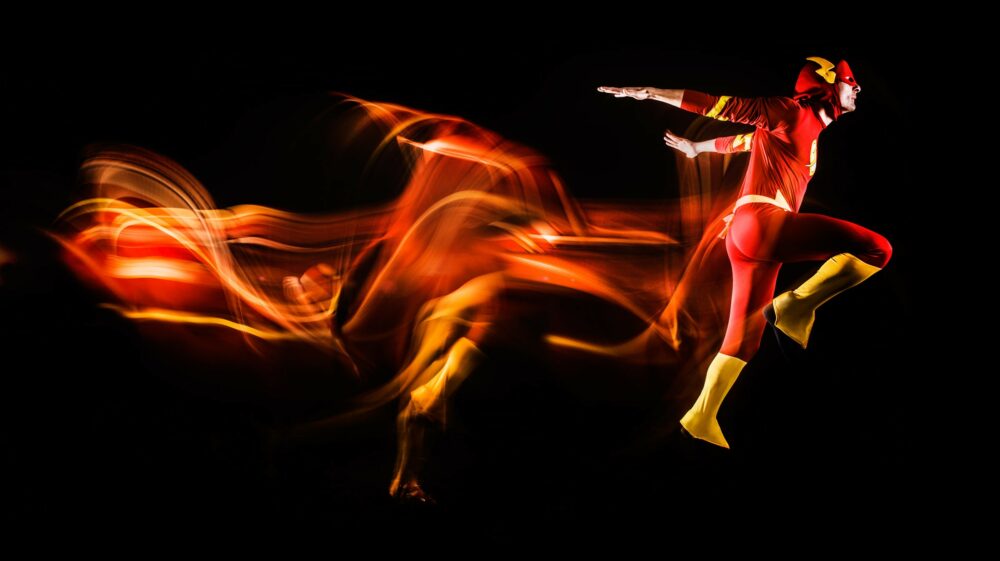
Design & Interface
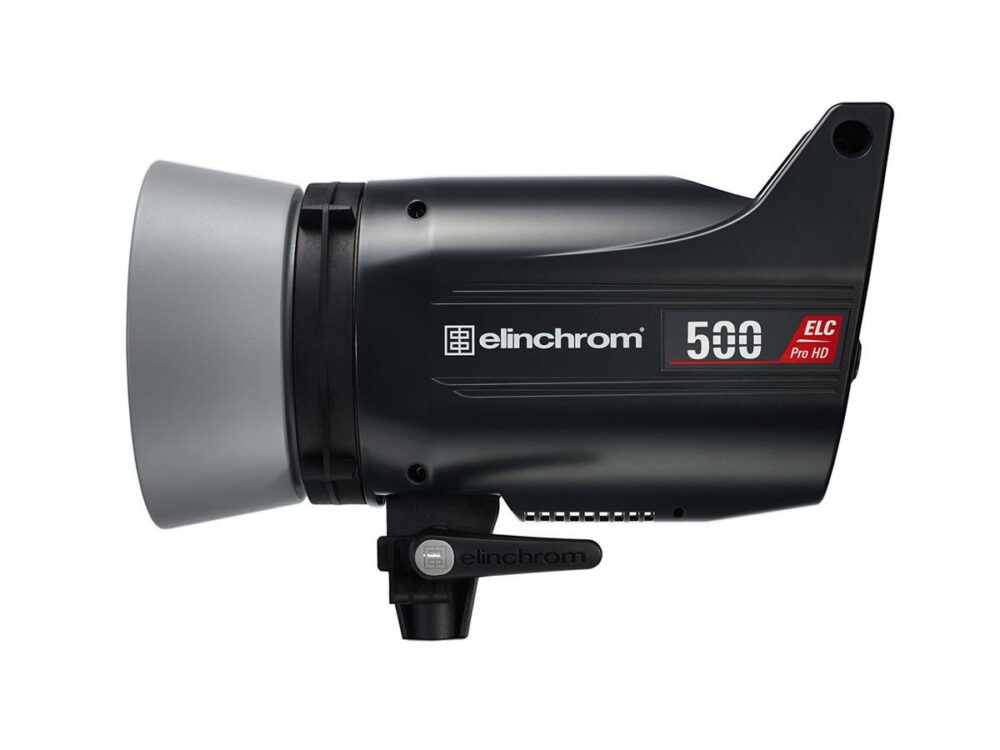
How has the new interface of the ELC Pro HD changed your way of approaching your work?
The interface and its selective button are very clear and intuitive. That makes the product even more easy-to-use – gone are the studio lights which could scare you with their complexity. I have to admit that for me, artificial lighting is as difficult to learn to use as a camera itself, so the more simple and intuitive the interface is, the quicker the general public will be able to develop, and that’s really cool. Not to ruin anything, the select button is just as reassuring, as it’s clever, simple, fast and precise – bravo I say!
More precisely, what is the most important information to consider and analyse in a shoot?
Given that I work in a really intuitive way, I don’t want to waste time trying to configure a flash unit. Now, the interface and the screen allow me to really get to the good stuff quickly and efficiently, and all in the blink of an eye.
What’s your opinion on the design?
I don’t have any particular remarks about it – it’s a studio light of a good size and with a good appearance, but it’s what’s inside and its interface which really make the difference. So, apart from painting the ELC Pro HD in pink glitter or putting on blue neon lights like a tuned-up car and the sound of a Ferrari every time you press the shutter button, I don’t have any particular suggestions to make!
“The ELC Pro HD is easy-to-use, gone are the studio lights which could scare you with their complexity”
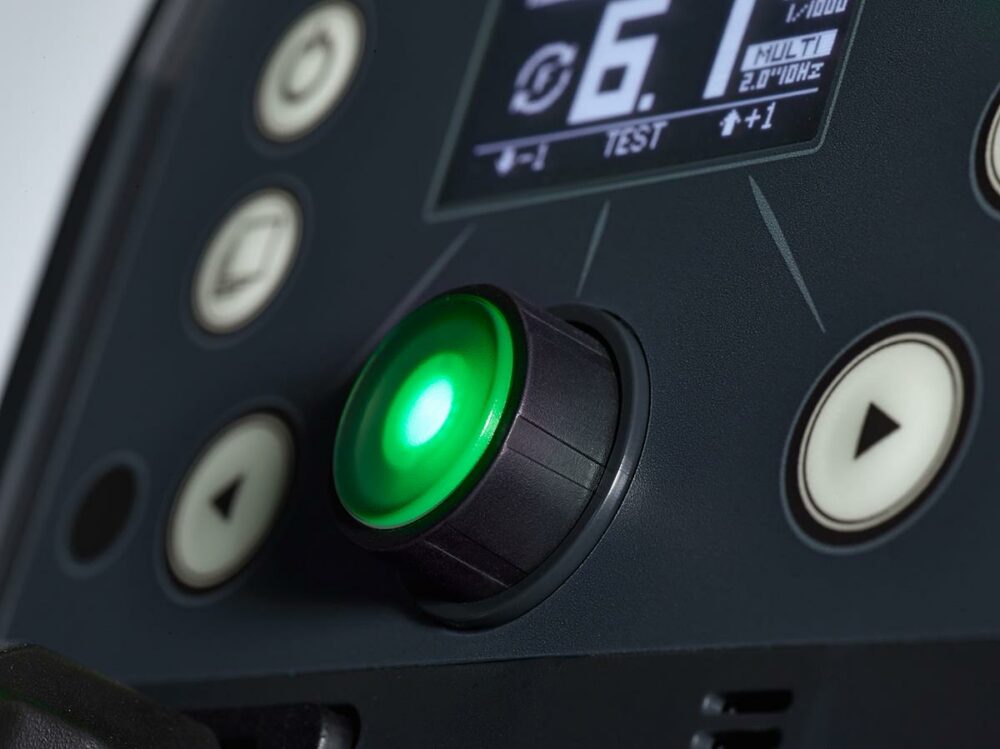
How would you position these new units in the current market of studio lights? Are you still on the lookout for new products which come onto the market in the photography world, for example?
The market is increasingly competitive, without a doubt, but at the same time it’s opening up and becoming more accessible. This is an interesting product because of its high quality but anyone, even an enthusiast who is just starting out, could work the ELC Pro HD thanks to its easy-to-use nature. So yes, it’s expensive but you can’t have a light which gives powerful and quick flashes without a bit of technology behind it. Personally, between the moment you experience photography and the moment that you have units which work, you don’t necessarily take much time looking if the competition has a product which flashes XYZ times faster(especially when it’s only at very low power!). That said, I admit that I’m a little reticent about studio lights, because I’m so used to my Quadra battery system but what I can say is that these units have really tempted me. The power/speed relationship is really very good for my purposes. I don’t have this obsession with buying the best product in the world; I need the best flash for what I do and the technology in others simply doesn’t relate to me. To finish, it’s worth mentioning the stability of the colour temperature. It’s a key factor in a purchase for me, and it’s also one of the reasons why I work with Elinchrom units. As I often work fast, sometimes very fast (1-2 minutes maximum), especially with celebrities, my units have to work like clockwork at every level, even the most demanding, and for that the stability of the colour temperature on the ELC Pro HD is faultless.
On the subject of accessories, what do you particularly like, what are your latest purchases, fancies or things you dream to buy?
As I travel a lot, size is a key factor. My favourite softbox is the Rotalux 70×70 cm, a small Rotalux, and I do almost everything with it. I also have the Octabox 135, these are the two softboxes which follow me everywhere. Items I dream of buying? I don’t know. I grew up with it, I’m not that attached to it any more. I just need good, reliable equipment like Elinchrom or Hasselblad, and after that what counts and what makes me dream is finding good projects that will show off a load of stuff.
Could you talk to us a bit about your next projects which are close to your heart?
I’m currently working on a Street Art project but based on light rather than the picture. I’m calling it Street Art 2.0, that is I’m using light – what could be more logical when you’re a photographer? I’m planning portraits or pictures which always have a basis in photography but which bring in new things, which is what being an artist is for me.
Finally, do you have any kind of message to pass on to future aspiring photographers who would like to get started?
Do it, do it, do it!

